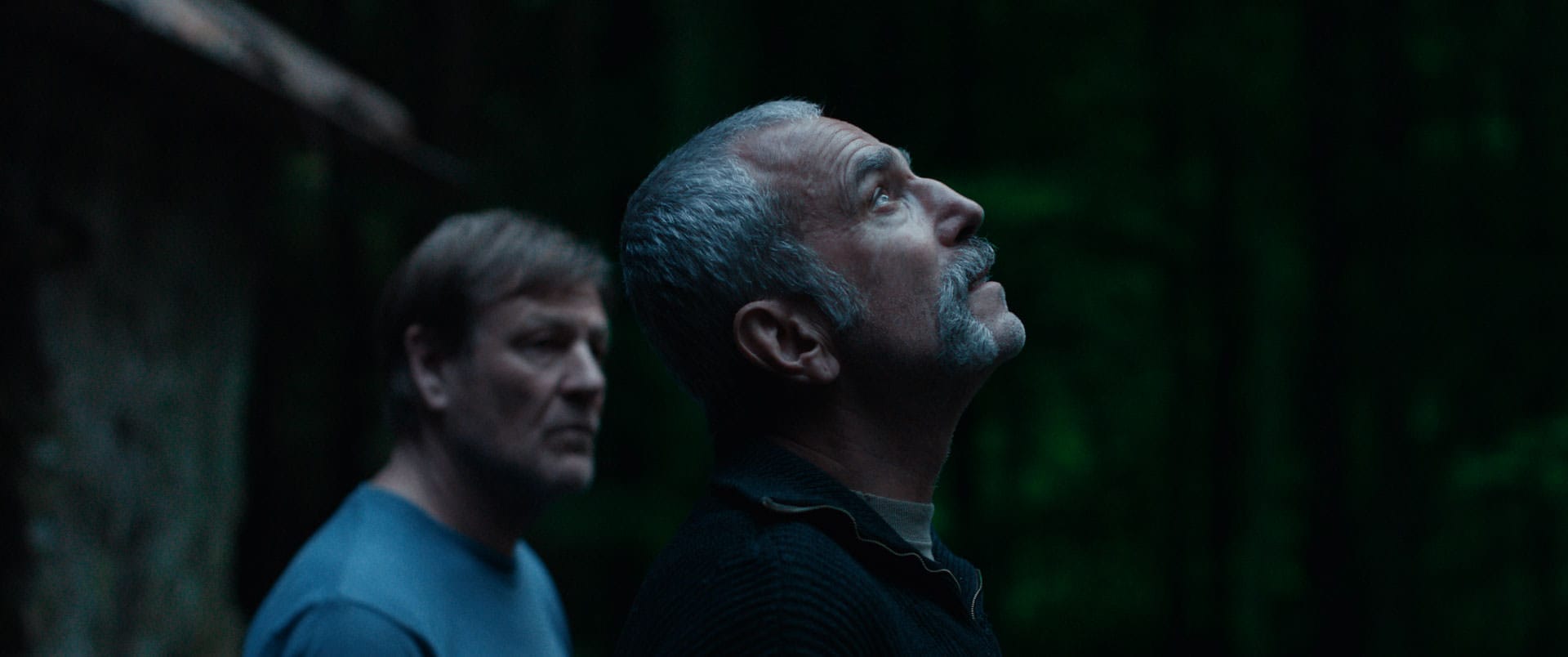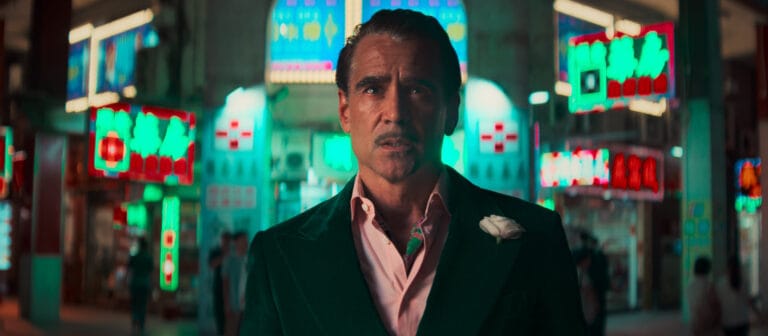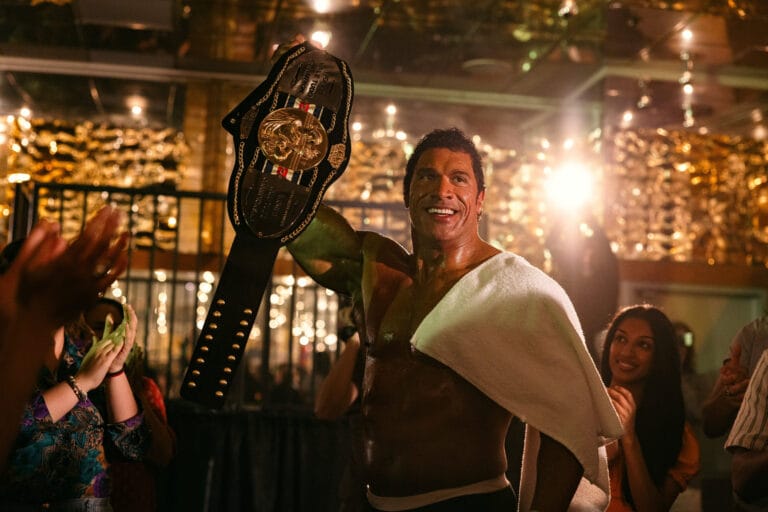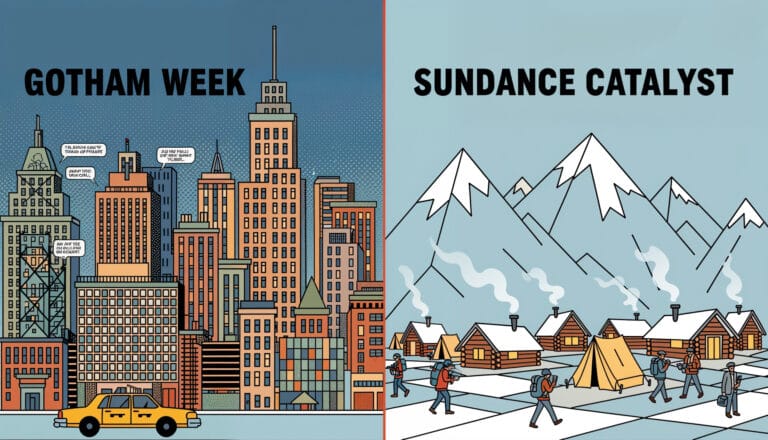- The Legends Are True: Daniel Day-Lewis’s son, Ronan, confirms his father’s infamous on-set immersion and commitment to character are not exaggerated.
- A New Perspective: Directing his father in the upcoming film “Anemone,” Ronan Day-Lewis offers a rare, firsthand glimpse into the process and its intensity.
- Modern Lessons for Creatives: The core principle of total immersion behind the method can be adapted by today’s filmmakers and AI artists using digital tools for deep world-building and character development.
The legacy of Daniel Day-Lewis is carved from whispers and legends. For decades, stories have swirled around his total commitment to the craft—a process so immersive it famously blurs the line between actor and character. From learning to build canoes for The Last of the Mohicans to reportedly texting in character as Abraham Lincoln, his process has become the modern gold standard for method acting. But were these tales industry folklore or gospel truth? Now, as he steps out of a self-imposed retirement for one more project, we have our answer from the most intimate of sources: his son, Ronan Day-Lewis. Directing his father in the surreal drama “Anemone,” Ronan has confirmed that the infamous Daniel Day-Lewis method acting style is exactly as intense as we’ve always heard, offering a fresh and fascinating look at a master’s process and what it means for creatives today.
The Legend of Method Acting Personified
Method acting, at its core, is a range of training and rehearsal techniques that seek to encourage sincere and emotionally expressive performances. It is a philosophy of total immersion, where the actor doesn’t just pretend to be the character; they strive to embody their thoughts, motivations, and emotional history. In the pantheon of Hollywood, no one has championed this philosophy with more rigor and mystique than Daniel Day-Lewis. His approach transcends mere preparation; it is a complete transformation that often begins months before cameras roll and doesn’t end until the final cut. This dedication has built a reputation for creating performances of unparalleled depth and authenticity, making him a figure of both immense respect and intense curiosity within the industry. His work serves as a powerful, if extreme, testament to what can be achieved when an artist fully dedicates their entire being to their creation.
The real-world examples of his commitment are the stuff of cinematic legend, each one a chapter in the lore of his process. For his Oscar-winning role in My Left Foot, he famously refused to leave his wheelchair between takes, insisting crew members feed him and wheel him around the set to fully understand the physical reality of Christy Brown’s life. While preparing for The Last of the Mohicans, he lived off the land in the wilderness, learning to track, hunt, and skin animals. For In the Name of the Father, he spent nights locked in a solitary confinement cell in an abandoned prison to connect with the torment of his character. These aren’t just quirky anecdotes; they are deliberate, painstaking efforts to build a performance from the inside out, ensuring every gesture and line of dialogue is rooted in a lived, albeit simulated, experience.
For filmmakers, actors, and even AI artists, the key takeaway from the Daniel Day-Lewis method acting philosophy isn’t necessarily to live in the wilderness, but to embrace the principle of deep immersion. This level of dedication to research and understanding is what separates good work from truly groundbreaking art. Before you write a single prompt or block a single scene, immerse yourself in the world you’re trying to build. This could mean historical research, studying human psychology, or exploring visual references. Creatives today can leverage powerful digital tools to aid this process. For instance, our Midjourney Mastery Guide shows how you can use AI to generate entire worlds, exploring visual themes and character aesthetics with a depth that was previously unimaginable, creating your own form of digital immersion.
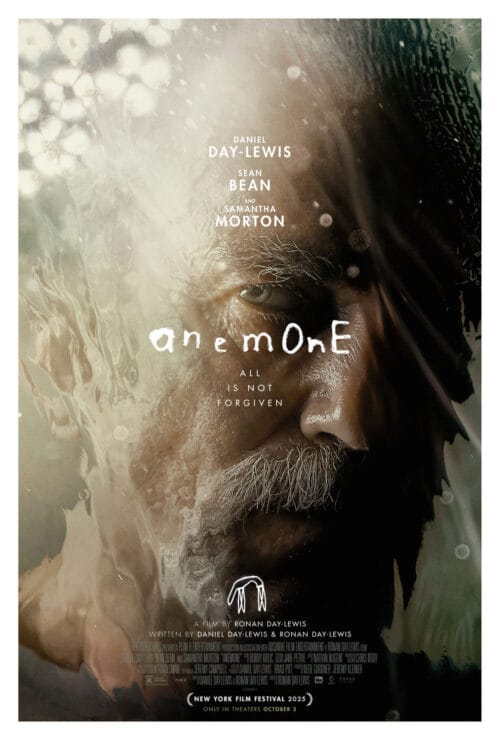
A Son’s Perspective: Directing a Legend
The dynamic of a son directing his own legendary father is compelling enough, but when that father is Daniel Day-Lewis, the story takes on a new level of intrigue. Ronan Day-Lewis’s feature debut, “Anemone,” a film described as a “surreal and storm-cloud-laden drama,” explores the psychological scars of an English soldier after serving in Northern Ireland’s Troubles. Casting his father in a role meant delving headfirst into the very process that has defined his career. In a recent interview, Ronan didn’t just hint at the intensity; he confirmed it outright, stating that the stories are true and the level of focus is absolute. This provides a rare, unfiltered window into a creative process that has been largely shielded from public view, seen not by a journalist or a co-star, but by a director who is also family.
This unique vantage point reveals both the immense power and the inherent challenges of working with such a committed artist. Unlike a typical director-actor collaboration, Ronan had a lifetime of context for his lead’s methodology. This familial understanding likely fostered a unique shorthand and a deep well of trust, which is essential when an actor is pushing themselves to such emotional and psychological extremes. However, it also presents the challenge of maintaining directorial authority and a clear vision while navigating the sheer force of a performance built on such an all-consuming technique. The collaboration on “Anemone” becomes a fascinating case study in creative partnership, where the boundaries between director, actor, father, and son must be constantly negotiated to serve the final film. This deep collaboration is a cornerstone of great Filmmaking AI Workflows, where a shared vision is executed with precision.
The insight from Ronan’s experience is invaluable for any creative leader, be it a director, a producer, or a project manager. It underscores the critical importance of understanding your collaborator’s process and adapting to it without compromising the project’s goals. When working with intensely focused talent, the most practical tip is to establish a rock-solid foundation of communication and shared objectives during pre-production. This means clearly defining the character arcs, the visual language, and the emotional tone of the project before the intensity of production begins. This preparation creates a safe and productive container for creative energy to flourish. The conversation around the Daniel Day-Lewis method acting style is a powerful reminder that while process is personal, the film itself is a collaborative medium, and a director’s job is to harmonize all the creative elements into a single, cohesive vision.
The Impact and Controversy of the Method
While the results of Daniel Day-Lewis’s work are almost universally praised, the “method” itself is a subject of ongoing and often heated debate within the film industry. For every breathtaking performance it produces, there are cautionary tales of on-set friction and questionable behavior from other actors who have adopted similar techniques. The controversy often centers on where the character ends and the actor begins, and how an actor’s process impacts the cast and crew around them. Critics argue that staying in character at all times can create a hostile or uncomfortable work environment, placing an undue burden on fellow collaborators who are simply trying to do their jobs. This raises important questions about professionalism, safety, and respect on a film set, forcing the industry to question if any performance, no matter how brilliant, is worth compromising the well-being of the collective.
On the other side of the argument are the undeniable results. The supporters of method acting point to the pantheon of iconic performances it has produced, from Marlon Brando in On the Waterfront to Robert De Niro in Raging Bull and, of course, the unparalleled filmography of Daniel Day-Lewis himself. The three Best Actor Oscars on his shelf are a testament to the power of his technique. The argument here is that certain roles require a level of psychological and emotional depth that can only be reached through total immersion. For these actors, the method isn’t a choice but a necessity to deliver the authenticity a character demands. They see it as a profound artistic discipline, a personal sacrifice made in service of storytelling that creates characters so real and unforgettable they become permanently etched into our cultural consciousness.
This ongoing debate matters immensely for the modern creative landscape because it forces a crucial conversation about the relationship between process, product, and professionalism. For directors and producers, it’s a constant balancing act. The practical takeaway is to foster an environment that champions deep creative exploration while maintaining firm boundaries of professional conduct. You can and should encourage your actors and artists to go deep with their work, but this must be paired with the expectation that respect for the crew and the collaborative spirit of the set is non-negotiable. The enduring discussion around the Daniel Day-Lewis method acting approach is less about whether it’s “right” or “wrong” and more about how to harness its intensity and commitment while ensuring a production process that is safe, respectful, and productive for everyone involved.
Modern Immersion: The Digital Method
Nothing can truly replace the genius of Daniel Day-Lewis’s acting—the lived intensity, the collaboration on set, and the human connection that comes from inhabiting a role with fellow creatives. The spirit of his method acting philosophy—that of complete, obsessive immersion—was never just about craft in isolation; it was about the raw human experience of sharing space, building trust, and creating something greater together. Even as digital creation and artificial intelligence gain momentum, nothing can quite replicate the energy of a real set, the improvisations that arise between actors, or the subtle ways a performance shifts when you lock eyes with another human being. Those moments can’t be simulated. They’re what make cinema alive.
That said, new tools have opened up a parallel path—an opportunity for experimentation, especially for creators working with limited budgets or resources. An AI artist designing a character for a film or game can now use generative tools to explore hundreds of visual possibilities, sketching out costumes, environments, and atmospheres that would otherwise take weeks to prototype. This process can be guided by carefully structured prompts that shape a character’s backstory and personality, as detailed in guides like our list of 10 Powerful Midjourney Prompts for Character Design. Similarly, a director can use AI-powered pre-visualization software to “walk through” digital sets, experimenting with camera angles and lighting long before physical construction begins. These tools provide access to iterative exploration that once demanded large teams and high budgets, creating a new entry point for independent voices to refine their vision.
Yet even here, the boundary is clear. While AI can democratize aspects of creative immersion and allow for broader experimentation, it should never be seen as a substitute for the human experience at the heart of storytelling. What matters most—the spark between collaborators, the authenticity of lived emotion, the resilience of trial and error on set—remains uniquely human. The practical insight for any creator is this: explore with AI where it helps, use it to expand your palette, but never mistake the tool for the art itself. By arriving on set with that perspective—whether you’ve built digital mood boards, mapped out character genealogies, or drafted fictional landscapes—you carry forward the same spirit that has made the Daniel Day-Lewis method acting style so legendary. The technology can support the process, but it’s the human commitment to authenticity and connection that gives the final work its depth and staying power.
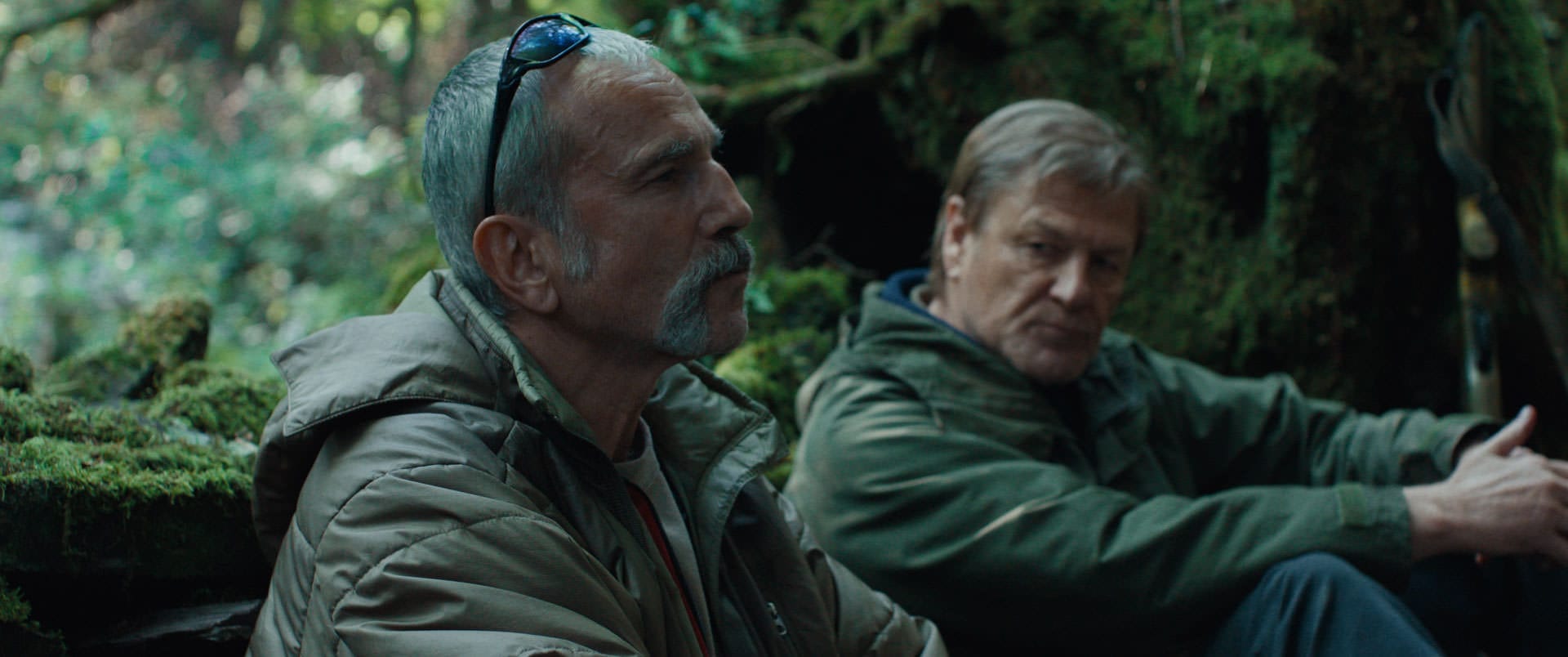
Internal Links for Further Learning
- Craft cinematic AI art with our Midjourney Mastery Guide.
- Integrate AI into your pre-production with these Filmmaking AI Workflows.
- Generate endless character concepts with these 10 Powerful Midjourney Prompts for Character Design.
Conclusion
The confirmation from Ronan Day-Lewis that his father’s process is as rigorous as the legends suggest does more than just satisfy our curiosity. It reaffirms a timeless creative principle: true mastery is born from total immersion. While the Daniel Day-Lewis method acting style may be an extreme path few can or should follow, its core philosophy of unwavering dedication is a lesson for every filmmaker, writer, and artist. In our digital age, this commitment can be channeled into new workflows, using powerful AI tools to build and inhabit our story worlds with unprecedented depth. The challenge remains the same—to go beyond the surface and create work that feels authentic, lived-in, and unforgettable.
Explore how you can bring this level of immersion to your own projects. Try our AI Render Pro to start your journey into deep digital world-building and transform your creative process from the ground up.
FAQ
What is Daniel Day-Lewis method acting?
It is an extreme form of method acting characterized by intense, long-term immersion into a character’s life and psychology. This often involves staying in character for the entire duration of a film’s production, both on and off set, and adopting the character’s physical and emotional traits to an exacting degree.
Is method acting considered dangerous or unethical?
The practice is controversial. While it can produce critically acclaimed performances, it is sometimes criticized for being psychologically taxing on the actor and for creating difficult or unprofessional working environments for the surrounding cast and crew. The ethical debate centers on balancing artistic expression with on-set safety and respect.
What is Ronan Day-Lewis’s new film “Anemone” about?
“Anemone” is described as a surreal drama that follows an English soldier who is deeply scarred by his experiences during The Troubles in Northern Ireland. It is the feature directorial debut of Ronan Day-Lewis and notably stars his father, Daniel Day-Lewis, in a leading role.
Discover more from Olivier Hero Dressen Blog: Filmmaking & Creative Tech
Subscribe to get the latest posts sent to your email.

